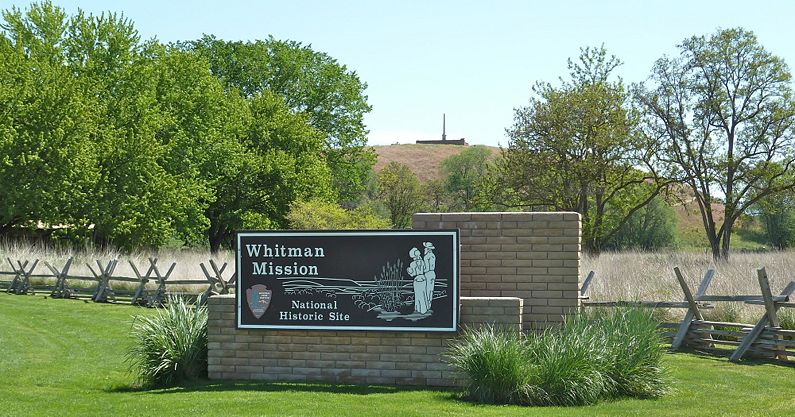Whitman Mission
|
Whitman Mission (1836-1847) - A Protestant mission established in 1836 by Marcus Whitman and his wife Narcissa Prentiss Whitman near present-day Walla Walla in Walla Walla County, Washington. Site of the Whitman Massacre in 1847. Destroyed during the massacre. Also known as Waiilatpu Mission.
History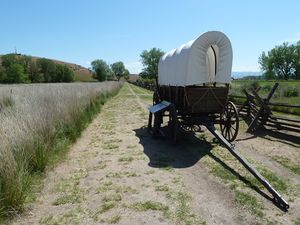 In 1836 the Whitmans headed West with another missionary couple, Henry Harmon Spalding and his wife Eliza. They departed from St. Louis for Oregon, traveling with fur traders who were headed for the Green River rendezvous in present-day Wyoming. Narcissa and Eliza became the first white women known to cross the Rocky Mountains. After crossing the mountains, the Whitmans and the Spauldings continued on after Green River in the company of two Hudson's Bay Company (HBC) employees and a number of Nez Perce Indians. They stopped at the Fort Boise (HBC) post for three days and were at the Fort Walla Walla (HBC) post on 1 Sep 1836. The group then traveled down the Columbia River to the Fort Vancouver (HBC) post, arriving on 12 Sep 1836. From Fort Vancouver Marcus and Henry explored possible mission locations. Marcus selected a site on the Walla Walla river and founded a mission for the Cayuse Indians at Waiilatpu in the Walla Walla Valley. Henry Spalding selected a site in present-day Idaho where they founded their mission on 29 Nov 1836 along the Clearwater river at Lapwai. The Spaulding Mission would serve the Nez Perce Indians who had requested that missionaries be sent to establish schools. In 1842, the American Missionary Board decided to close the Whitman Mission because Whitman's efforts were largely unsuccessful. Marcus went back east in a successful attempt to convince the board to continue support for the mission. He returned in 1843, helping to lead the first large wagon train over the Oregon Trail. For a time the Oregon Trail passed by the Whitman Mission and they were busy assisting American settlers with food and supplies. They took in eleven children of deceased immigrants and the mission became an early boarding school. By 1845, other trails had become more popular and the wagon trains that came by the mission were mostly those in need of supplies or those who had problems with disease or other troubles.
Whitman Massacre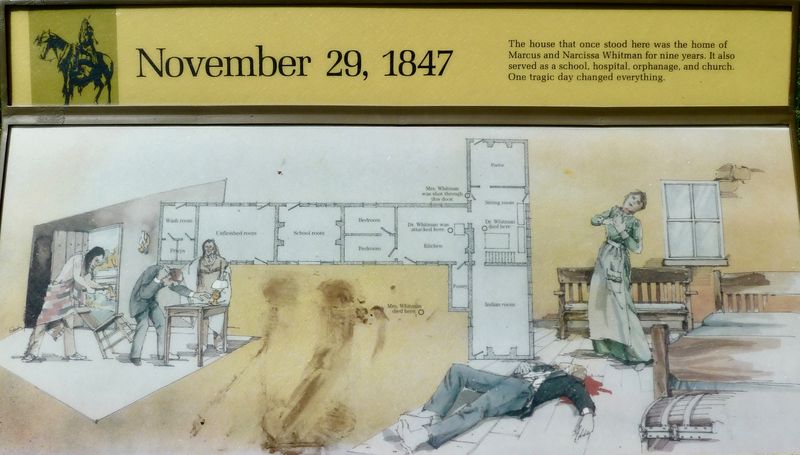 The troubles for the Whitman Mission began in late 1847 as one of the Oregon Trail wagon trains brought a measles epidemic to the mission that struck both the white and Cayuse populations. The Whitmans nursed both but most of the white children lived because they had some immunity and nearly all the Cayuse children died because they had no immunity. It is easy to see how the Cayuse might view the influx of settlers and now the death of most of their children as treachery on the part of the mission. On 29 Nov 1847, the Cayuse sought revenge on the mission by killing the Whitmans and twelve other whites. They burned down the mission buildings and left the bodies lay where they fell. The Cayuse WarIt was not until February or early March 1848 that Oregon Volunteers arrived at the site and buried the dead. The volunteers constructed a small fort (Fort Waters) from the mission ruins and set out to find the guilty parties. The pursuit of the killers expanded into the Cayuse War. The shock of the Whitman Massacre spread throughout the northwest and many feared that the violence would spread into other areas. Militias were formed and isolated settlers and communities prepared defenses. The Spaulding Mission in Idaho closed and the Spaulding missionary couple moved away. The Cayuse War ended with the surrender, trial, and execution of five of the accused Cayuse murderers on 3 Jun 1850. The AftermathThe Cayuse War was the first of several conflicts that arose in the northwest in the late 1840s and 1850s that represented a general uprising of the Indian populations which required both State and Federal troops to quell. The overall result was that the Indian populations were severely reduced and the survivors were placed on reservations and guarded in many cases by Federal troops. Current Status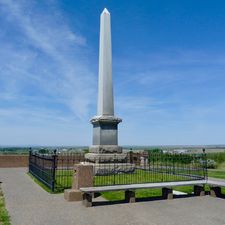 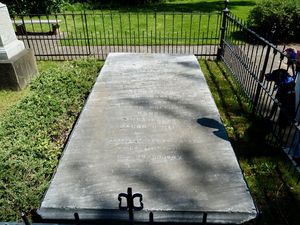 Part of Whitman Mission National Historic Site near Walla Walla, Walla Walla County, Washington. There is almost nothing left of the mission or the fort. The placement of the mission is outlined with a concrete edge. On a hill above the mission, a monument was placed some 50 years after the massacre. The "Great Grave" containing the remains of the victims can also be seen. A replica Oregon Trail wagon is placed along what was the trail by the mission. Many interpretive panels explain the mission and the events.
See Also: Sources:
Fortification ID:
Visited: 28 Jun 2017, 15 May 2010
| |||||||
